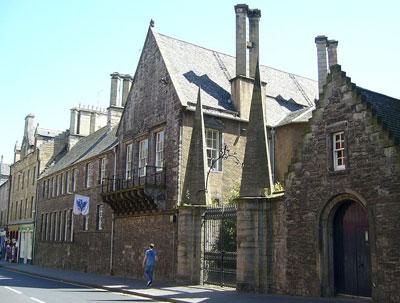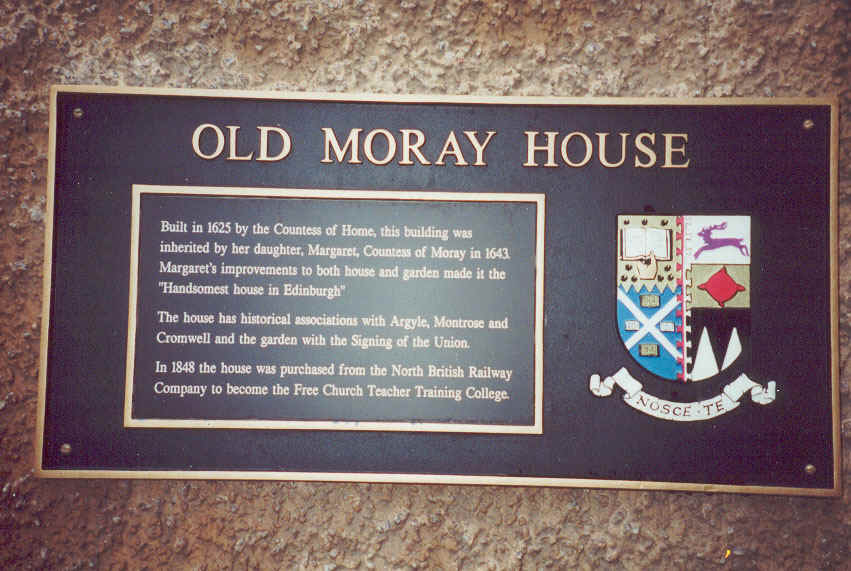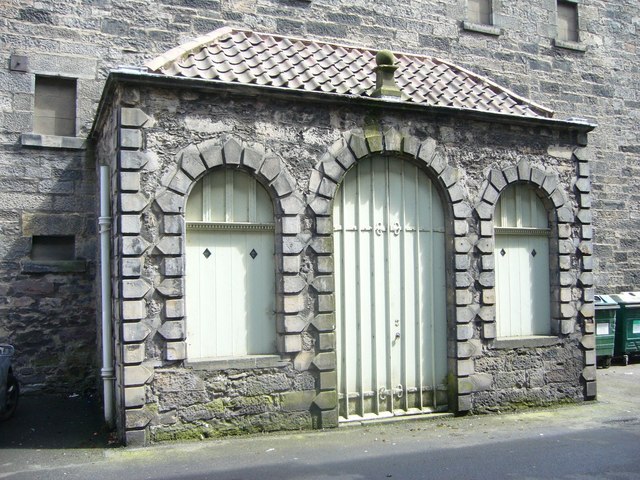

OLD MORAY HOUSE
Old Moray House, nestled within Edinburgh's historic Canongate district, stands as a testament to Scotland's rich architectural and educational heritage. Constructed around 1618, it originally served as a grand residence for Mary, Countess of Home, showcasing her refined architectural and gardening tastes, distinct from the era's norms. Over the centuries, this aristocratic mansion has been intertwined with the social and economic fabric of Edinburgh, transitioning through various owners and functions, reflecting broader historical currents.
By the mid-18th century, Old Moray House had become central to the operations of the British Linen Company, serving as a counting house, banking establishment, and linen warehouse. This period also saw the addition of the New House, or south wing, in 1755, further embedding the building's role in Scotland's burgeoning commercial landscape. Following the departure of the British Linen Company, the property underwent a significant transformation in the hands of the Cowan family, who leased it as a tea and paper warehouse. The Cowans were instrumental in maintaining and enhancing the building and its renowned garden, adapting it to their prosperous living and business needs.
The transition of Old Moray House into an educational institution began in the mid-19th century when it was acquired by the Free Church of Scotland for its Normal and Sessional School, marking a new chapter in its history. This acquisition initiated a series of extensive alterations to accommodate educational functions, including the removal of partitions and the addition of new windows and classrooms. The school's establishment heralded Moray House's enduring connection to education, laying the groundwork for its eventual incorporation into the University of Edinburgh's educational framework.
In the 20th century, Old Moray House underwent further refurbishments to support its role as a teacher training institution, reflecting evolving educational needs and pedagogical approaches. These renovations sought to preserve the building's historical integrity while adapting its internal spaces to contemporary educational uses.
Today, Old Moray House is celebrated not only for its architectural significance, including its distinctive corbelled balcony and superior 17th-century Renaissance plaster ceilings but also as the oldest building within the University of Edinburgh. It forms a key part of the university's Moray House School of Education and Sport, symbolizing the intersection of heritage and education. The building and its adjacent garden, featuring a historic summerhouse, continue to contribute to the cultural and educational landscape of Edinburgh, underscoring the city's capacity for renewal and adaptation across centuries.
For anyone interested in the architectural and educational history of Edinburgh, Old Moray House offers a fascinating glimpse into the past, demonstrating how historic buildings can be repurposed to meet modern needs while preserving their historical essence.

OLD MORAY HOUSE PLAQUE

REAR OF OLD MORAY HOUSE
